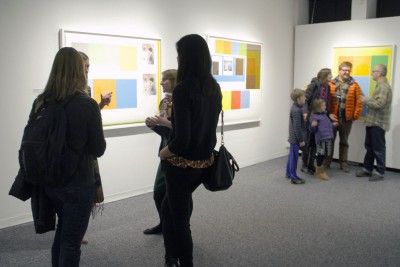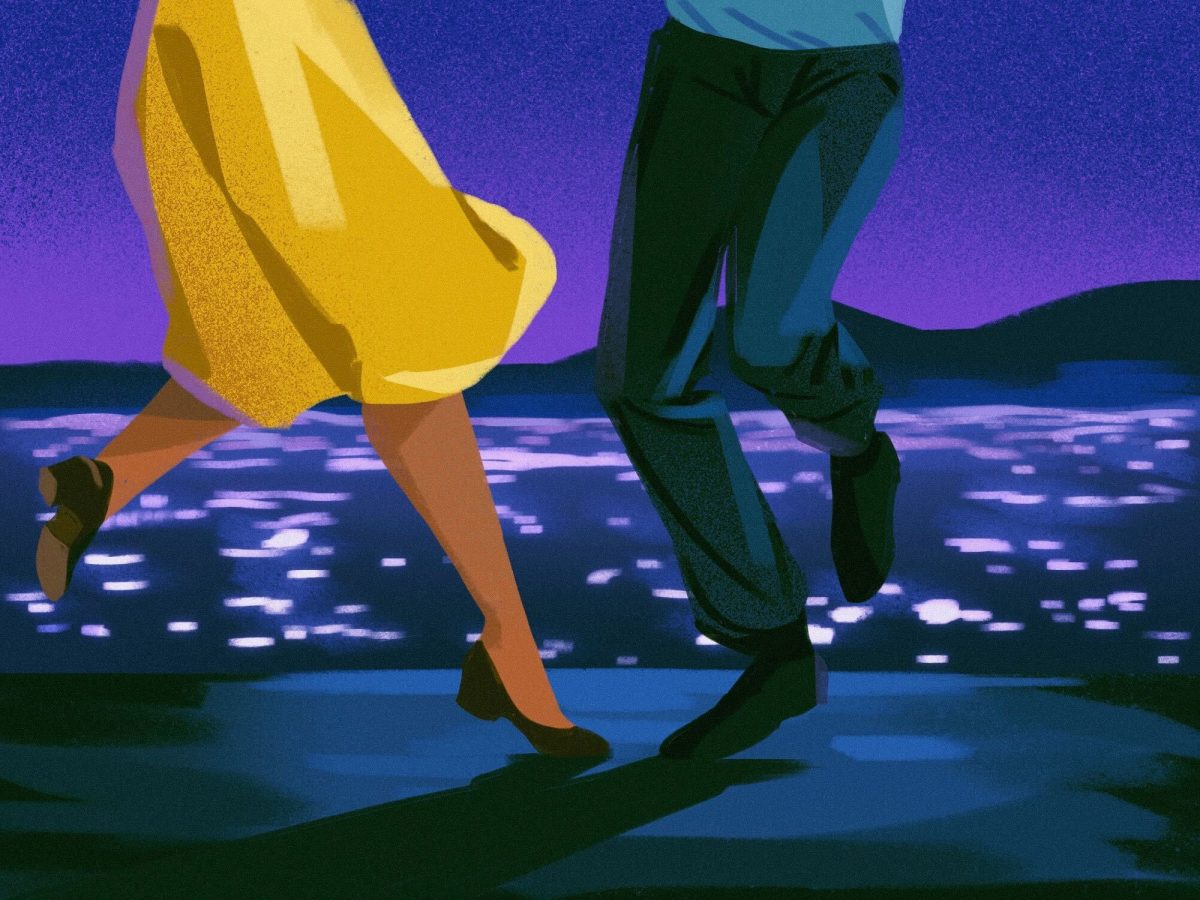
Synesthesia is a sensation produced in one modality when a stimulus is applied to another modality, as occurs when the hearing of a certain sound induces the visualization of a certain color.
Though the Boston-born, New York-based artist David X. Levine insists he does not have this neurological condition, there is something genuine and fascinating in the way Levine is able to transfer what he sees on television and hears through speakers into colors and drawings.
“When I listen to music, I get color and rhythm and composition sensations,” Levine said. “I would listen to the Velvet Underground. It would be purple and black. I’d have those colors in my head all the time when I would listen to them, so it would influence my mood. I’m very, very sensitive to sound and color.”
His latest exhibit “The Beatles are Dull and Ordinary ,” which held its opening reception Friday night at Boston University’s Sherman Gallery, features Levine’s vibrant yet subtle and sensitive drawings that focus primarily on pop culture. Levine utilizes the unconventional medium of colored pencils to capture the vibrancy and saturation that other mediums like oil paints cannot. The pop culture motif begins with the exhibit’s title, which Levine said he took from a popular controversy in the 1960s.
“In 1966, John Lennon was quoted as saying, ‘The Beatles are more popular than Jesus,’ and it was a big controversy,” Levine said. “In the South, there were a lot of protests, and they had Beatle record burnings. There’s a photograph … of these kids standing around a bonfire and a 10-year-old is holding a sign that says, ‘The Beatles are dull and ordinary.’ In 1966, that child thinks the Beatles are exciting and extraordinary. I thought it was exciting to see this photograph of a child that doesn’t even know he believes the opposite of what the sign says. It made me want to replicate that.”
Levine replicates these feelings of excitement and oddity through the oversaturation of colors, geometric shapes and pictures of well-known pop culture icons such as Mary Tyler Moore. This focus on pop culture stems from a fascination with celebrities, music, movies and TV, he said.
“It’s a part of everything that’s around you,” Levine said.
The exhibit features a wide array of pop-culture aspects, yet their common connection is that they all reflect Levine’s avid interest. He gives no detailed reason for any of them, other than the fact that they simply exist.
“It’s sort of magical why you have a crush on somebody and not on somebody else,” Levine said. “I feel the way I feel, and then I get a hold of it, and I go all the way with it.”

His personal favorite, “Scarecrow,” features a multitude of rectangles and squares in different shades of browns, greens, pinks and other colors positioned in the middle and along the sides of the paper. Levine was inspired by the Pink Floyd song “The Scarecrow.” He said he would listen to the song about 30 times a day for a month and transmit the colors he saw and emotions he felt onto paper.
“I’m trying to not make this square so boring. The challenge is to make it exciting,” Levine said, referring to the geometric patterns of the drawing.“And that was the challenge with this, and I think it was a bridge to the next place.”
Another striking drawing is “I’m Still in Love with Emily Kane,” which demonstrates Levine’s amazing sensitivity to color. Inspired by Vincent Van Gogh’s famous “The Bedroom” paintings, Levine puts a contemporary spin on the original pieces, utilizing over-saturated blues and yellows to capture the audience’s attention. Levine is able to feature these vibrant colors, yet ironically still reflect feelings of somberness and loneliness.
“Color is very important to me. I take my time trying to figure it out. It’s intuition, and the feeling that I have at that time,” Levine said. “I’m 52, so when I started watching TV, it’s the first time that I remembered color. And if you can picture color from 1968, it’s very saturated.”
The combination of colored pencil, saturated colors and pop culture icons in one drawing may seem a bit odd, yet it is exactly this oddity that makes Levine’s artwork perplexing and fascinating.
“William Blake was a poet and a printmaker, and a quote of his is ‘The fool who continues in his folly will become wise,’” said Levine. “So, Mary Tyler Moore … from the old TV show is a ridiculous thing to make art of. But it’s no more ridiculous than a blue circle or Marilyn Monroe or Jesus Christ. If you can make it something that someone will be drawn towards … it will be transcendent.”
“The Beatles are Dull and Ordinary” will be on display at the Sherman Gallery through March 27.


























































































































